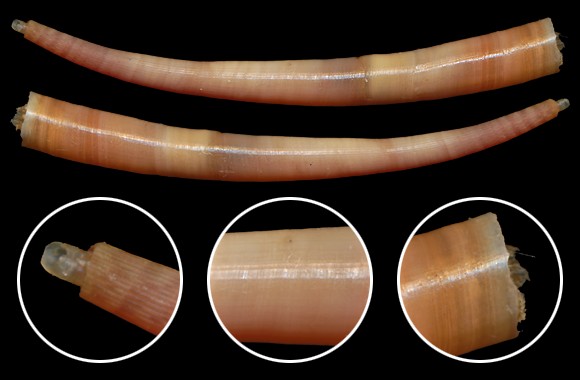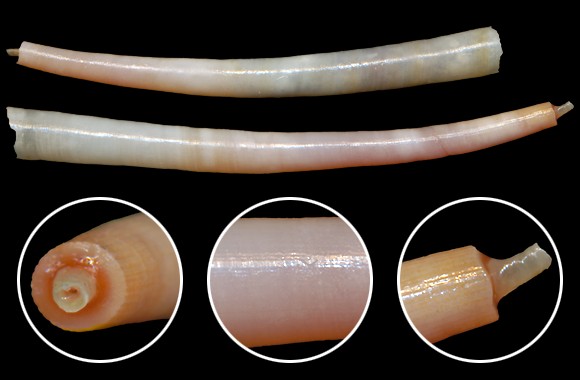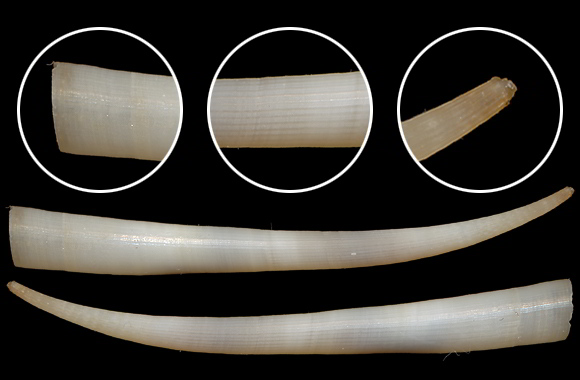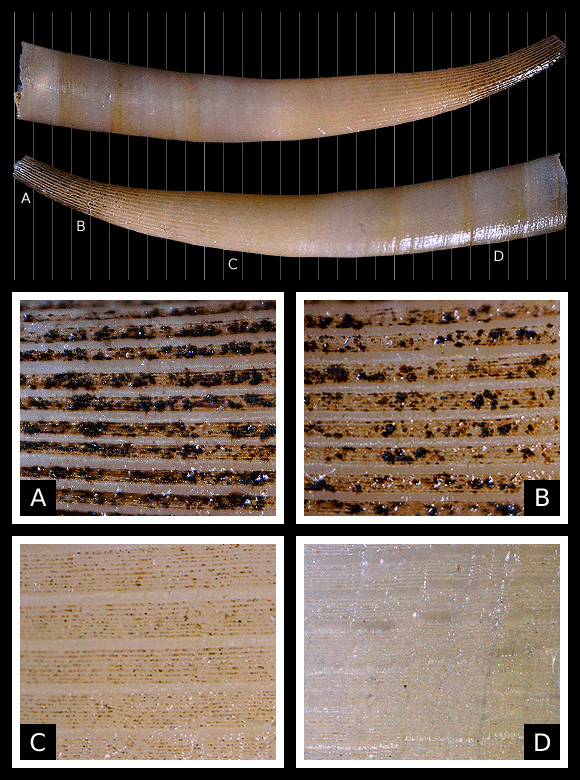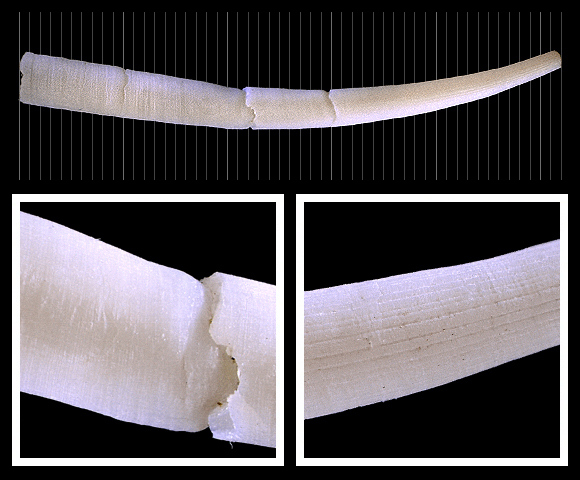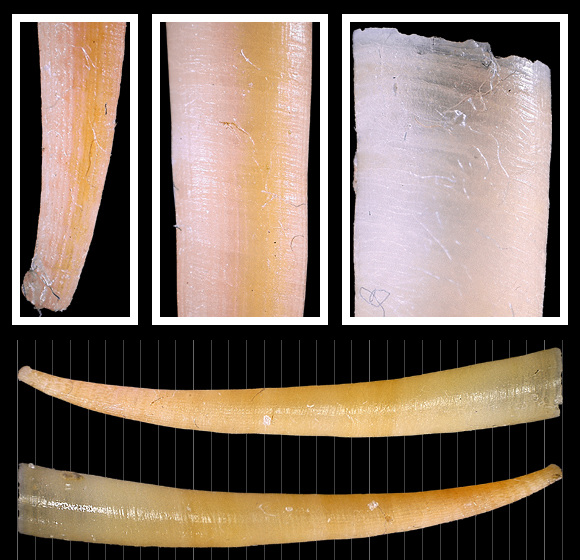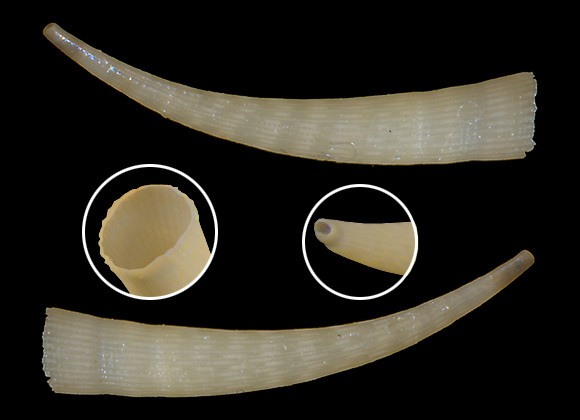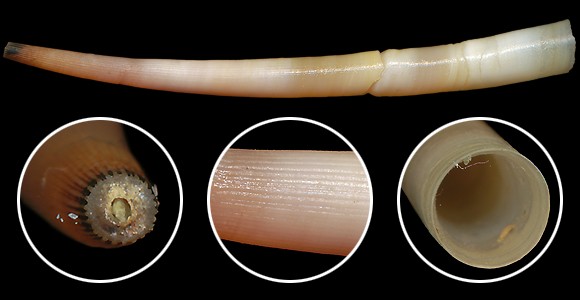
« White with pink apex, yellow, sometimes black apex, nearly lusterless. » (B. Sahlmann 2006). « 30 fine striae at apex in adult. »
— Elafonisi channel, Kissamos, SW. Crete. 60mm.
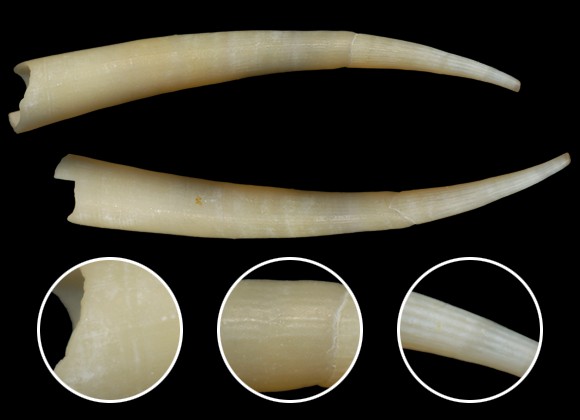
« It is strong and rather thick, smooth, somewhat glossy, and, when live or fresh, white, with a wash or tinge of yellowish brown,
especially towards the lower end, or taper extremity. The inside is white and glossy. » – E. M. da Costa: Historia Naturalis Testaceorum Britanniae, London 1778.
Beached. Gruissan, Occitania, S. France. 27mm.
The rapidly increasing cross-section and the weak apical ribbing are the two main specific characters.
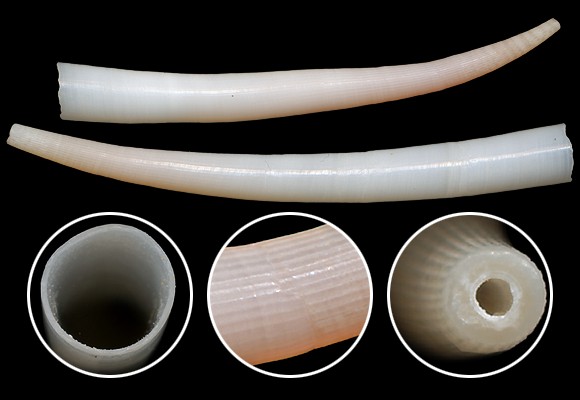
« Dentalium tarentinum: Shell less slender and rather more curved than D. entalis, not so apt to be segmented, very solid and opaque, mostly dull and lustreless. Sculpture: fine and regular longitudinal striae towards the point; and the entire surface appears, under a good magnifying power, covered with extremely numerous and delicate impressed lines in the same direction; there are also the usual marks of growth. Colour creamy, with sometimes a reddish-brown tinge, or clouded rings denoting the periodical lines of growth, and occasionally a pinkish hue near the point. Margin at the anterior end jagged, as in the other species; at the posterior end it is abruptly truncated, and furnished with a very short and small straight pipe, placed in the middle and having a circular orifice; it has no notch, groove, slit, or channel. […] In the adult the striae cover the whole surface, and not merely the narrower part; in the young these are fine ribs. Lister first noticed this shell as British, from Barnstaple Bay. Da Costa described and figured it as D. vulgare, a name which ought in justice to be preferred, because that given by Lamarck was not only long subsequent in point of date, but unsupported by a proper description. » – J. G. Jeffreys: British conchology Vol. III, London 1865.
